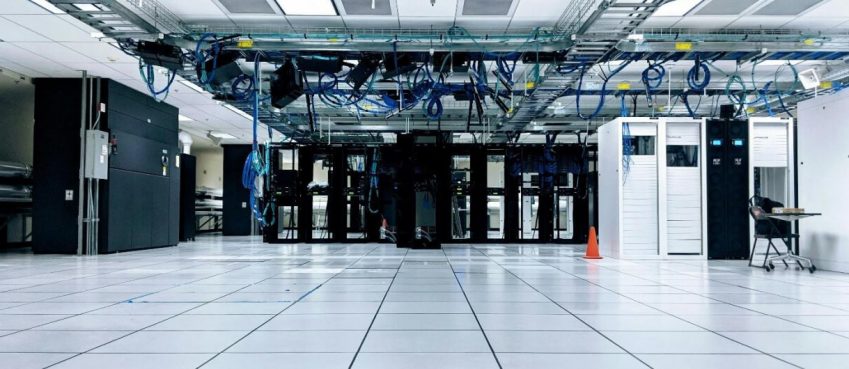
The rise of remote work has been a very positive experience for many employees and companies. However, it has also brought new cybersecurity risks. Remote workers are particularly vulnerable to cyber threats, as they often use personal devices and networks to access company data.
While some remote workers may be aware of the potential threats, they may need to learn how to protect themselves. Here’s a quick guide to ten common cybersecurity risks that remote workers may face and some practical tips on how to prevent them.
Phishing Attacks
Phishing attacks are one of the most common cybersecurity risks for remote workers. Hackers use emails and fake websites to trick users into giving away sensitive information like passwords or credit card numbers. It is essential that all remote workers use caution when opening links, emails, and other suspicious content that may contain phishing attempts. To prevent phishing attacks, your managers should train remote workers to recognize suspicious emails and regularly remind them not to click on links from unknown senders.
Also read: Best 3DS Games In 2024 (#3 Is Best) | Best Nintendo Games To Right NowSocial Engineering Attacks
Social engineering is a type of cyberattack that uses psychological manipulation to persuade individuals into providing valuable information or access to systems. These attacks can take the form of phishing emails, phone calls, physical mail, or even face-to-face interactions. Remote workers should be taught to recognize social engineering attacks like phishing emails and phone scams and never to give sensitive information to unknown callers or senders. You can also advise employees to have all business mail sent to a company PO box so you can double-check that nothing is threatening.
Malware Infections
Malware, spyware, and ransomware can cause severe damage if employees are not vigilant when it comes to identifying malicious links sent via emails or social media. These issues can be devastating for remote workers and lead to data theft, system damage, and financial loss. Malware encompasses numerous forms of malicious software programs designed to compromise user systems.
Downloading anti-virus programs on all devices they use for work can help reduce the risk of malicious programs being installed without consent. You should also train your remote workers on how to keep their software up-to-date and use strong passwords. However, even with the protection in place, it is crucial that people can identify and respond appropriately to any potential threats.
Weak Passwords
Weak passwords are a significant security risk for remote workers because hackers can easily crack them. Even with multifactor authentication, weak passwords can leave companies open to attack. Remote workers should use strong passwords that have long phrases and include a mix of letters, numbers, and special characters. They should also avoid using the same password for multiple accounts.
Unsecured Wi-Fi Networks
Employees working from home must have a secure Wi-Fi network with a complex password to keep company data and information safe. Public Wi-Fi networks are a common target for hackers, as they are often unsecured and can be easily intercepted. Remote workers should use a VPN (Virtual Private Network) to encrypt their internet connection and prevent data theft on unsecured Wi-Fi networks.
Lack of Encryption
Encryption is a key part of any security plan because it keeps unauthorized people from getting to sensitive information. It makes communication much more secure by ensuring that nobody other than the intended recipient can read any data sent between two points. Remote workers should make sure that their devices and data are encrypted, both in transit and at rest, to prevent data theft.
Unsecured Devices
Remote workers often use personal devices to access company data, which can create security risks. Recent research shows that 46% of businesses have had a security breach because employees did not lock down their mobile devices. Computers also pose a threat, so you should be careful about implementing remote desktop protocols (RDP).
RDPs allow users to log into another computer over the internet, enabling access even when away from the office. However, you should avoid excessive usage of these protocols due to the potential dangers of constantly leaving machines open. Setting permissions-based profiles helps limit exposure risk while still providing the required convenience.
Remote workers should protect their devices with passwords, encrypt their data, and avoid using public computers to keep their security safe. No matter what device the data is being accessed from, you and your teams can keep it safe by using passwords, biometric authentication, and encryption.
Human Error
Human error is one of the most significant cybersecurity risks for remote workers, as simple mistakes like forgetting to log out of a shared computer can lead to data theft. Training for remote workers on cybersecurity best practices should be available, and companies should implement strict security policies to prevent human error better.
Also read: Walmart Money Card Review: Good Or Bad?Lack of Two-Factor Authentication
Two-factor authentication, also known as “2FA,” adds an extra layer of security to all online accounts by requiring users to provide two pieces of evidence before gaining access. This second piece of evidence can be a combination of passwords, PINs, or even fingerprint scans. When possible, remote workers should use two-factor authentication to keep unauthorized people from getting into their accounts.
Lack of Security Policies
One of the remote workers’ most significant cybersecurity risks is the lack of security policies. Despite working at home, employees still need to practice basic physical security to ensure network and device safety. Companies should have strict security policies for remote workers, including rules about how strong passwords should be, how they should encrypt data, and how to control access. If employees have any physical data or confidential papers, they should keep them in locked storage areas whenever possible.
Wrap Up
Remote workers face several cybersecurity risks, but there are practical steps that your company can take to mitigate these risks. Educating your remote workers on the risks is the best way to prevent cybersecurity breaches. By implementing practices to help reduce the risk of these ten cybersecurity risks, your business can feel confident that its remote workers can keep sensitive information and data safe.
Top 10 News
-
01
Top 10 Deep Learning Multimodal Models & Their Uses
Tuesday August 12, 2025
-
02
10 Google AI Mode Facts That Every SEOs Should Know (And Wha...
Friday July 4, 2025
-
03
Top 10 visionOS 26 Features & Announcement (With Video)
Thursday June 12, 2025
-
04
Top 10 Veo 3 AI Video Generators in 2025 (Compared & Te...
Tuesday June 10, 2025
-
05
Top 10 AI GPUs That Can Increase Work Productivity By 30% (W...
Wednesday May 28, 2025
-
06
[10 BEST] AI Influencer Generator Apps Trending Right Now
Monday March 17, 2025
-
07
The 10 Best Companies Providing Electric Fencing For Busines...
Tuesday March 11, 2025
-
08
Top 10 Social Security Fairness Act Benefits In 2025
Wednesday March 5, 2025
-
09
Top 10 AI Infrastructure Companies In The World
Tuesday February 11, 2025
-
10
What Are Top 10 Blood Thinners To Minimize Heart Disease?
Wednesday January 22, 2025







